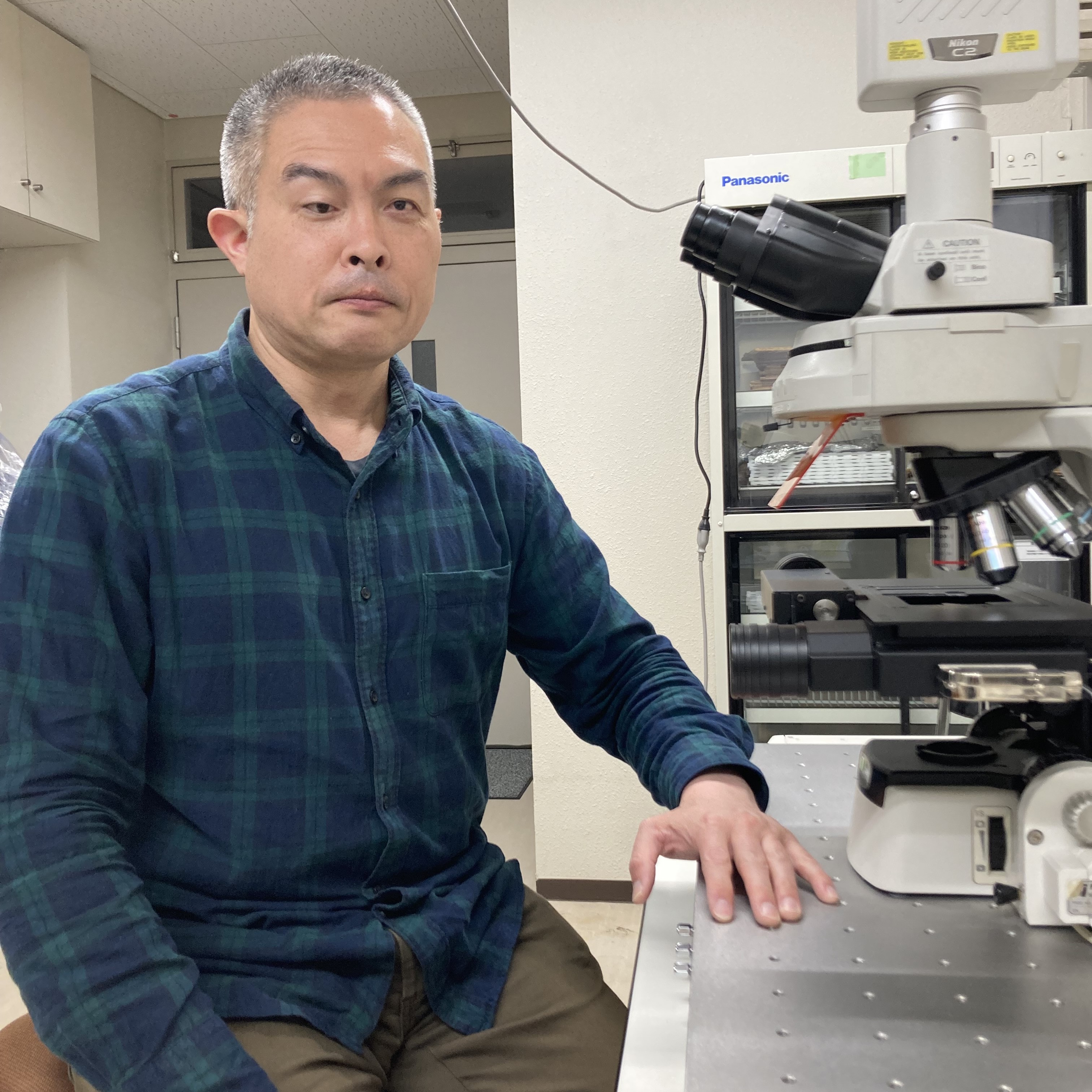Beyond the Paper: A Conversation with Dr. Naoki Shigematsu
Interviewed by Dr. Paige N. McKeon, April 1, 2024
The whiskers or vibrissae on rodent snouts are important for detecting tactile information and transmitting it to structures called barrels in the somatosensory cortex. There are two somatosensory cortex subregions inhabited by barrels: the anterolateral barrel subfield (ALBSF) and the posteromedial barrel subfield (PMBSF). In this paper from the lab of Takaichi Fukuda, Shigematsu and colleagues investigated the under-explored ALBSF in male mice. They discovered that, while the volume of a barrel in the ALBSF was smaller than a barrel in the PMBSF, the numeric density of parvalbumin-positive GABAergic neurons in the ALBSF was much higher. They also found that the cell bodies of parvalbumin neurons received more thalamocortical inputs than those in the PMBSF. Lastly, the amount of gap junction connections (also known as electrical synapses) between parvalbumin neurons were different in the ALBSF and PMBSF. These findings show that somatosensory cortex subregions have distinct morphological features, which supports behavioral studies demonstrating that these subregions have distinct functional roles.

What motivated you to pursue a PhD and then a post doctorate following that?
Nothing in particular, maybe a curiosity to gain new knowledge.
Have your research interests and career goals changed since your PhD? How did your PhD lead you to where you are now?
Yes, these have changed. When I was a PhD student, I investigated biological functions of cathepsin E, one of the aspartic proteases, by using the knockout mouse technique. I found out that isolated knockout mice showed rampant aggression compared to wild-type mice, suggesting that the enzyme may be involved in brain functions including emotion. In the process, I became interested in how morphological structures of the brain, which constitutes the central nervous system, contribute to these functions. Therefore, I chose a laboratory where I could conduct research that interested me.
“I think the most important thing for young researchers is to find a theme which they can put wholehearted effort into in the early stages of their research careers.
What advice do you have for young research investigators?
I think the most important thing for young researchers is to find a theme which they can put wholehearted effort into in the early stages of their research careers. Most researchers do not lead problem-free research lives and sometimes face unpleasant difficulties. I think researchers who have the theme can overcome such difficulties.
Did the outcomes of the experiments in this paper surprise you?
Yes, the results in the experiments surprised me in the following ways: first, we found layer 4 of the anterolateral barrel subfield (ALBSF) contained a larger population of parvalbumin-expressing GABAergic interneurons (PV neurons) compared to the same layer in the posteromedial barrel subfield (PMBSF). Second, somata of PV neurons in the ALBSF received more thalamocortical inputs than those in the PMBSF. And third, one subclass of PV neurons in the ALBSF formed gap junctions in lower densities compared to those in the PMBSF.
“Since previous behavioral studies in rodents have shown that micro- and macro-vibrissae have different functional roles in vibrissae-barrel systems, the morphological differences between the ALBSF and PMBSF that we found suggest that the ALBSF is a valuable research topic.”
What challenges or surprises did you run into along the way and how did you overcome them?
The most difficult process was preparing the tangential sections of the mouse primary somatosensory cortex. Typically, curved cortex is flattened in order to obtain tangential sections. However, in the present study, cortical tissue was not flattened in order to obtain accurate volumetric measurements of the structure of each barrel in each barrel subfield (ALBSF and PMBSF). The preparation method adapted in the present study changed the number of barrels contained in one tangential section depending on the angle of sectioning. The sectioning angles were changed step by step in order to obtain the tangential section-containing barrels similar to those in flattened tangential sections.
In your view, what is/are the most valuable contribution(s) of this paper to the field and where do you see the project going?
The most valuable contribution of the present study is its focus on the ALBSF, which has not received much attention even though its existence has been noted. Since previous behavioral studies in rodents have shown that micro- and macro-vibrissae have different functional roles in vibrissae-barrel systems, the morphological differences between the ALBSF and PMBSF that we found suggest that the ALBSF is a valuable research topic.
How was your experience with the eNeuro review process?
I think the eNeuro review process was fruitful. There were many corrections and suggestions provided by editors that were somewhat annoying at the time, but these corrections and suggestions for additional experiments made my manuscript better than before.
Read the full article:
The Anterolateral Barrel Subfield Differs from the Posteromedial Barrel Subfield in the Morphology and Cell Density of Parvalbumin-Positive GABAergic Interneurons
Naoki Shigematsu, Yuta Miyamoto, Shigeyuki Esumi, and Takaichi Fukuda
FOLLOW US
POPULAR POSTS
TAGS
CATEGORIES


 RSS Feed
RSS Feed




